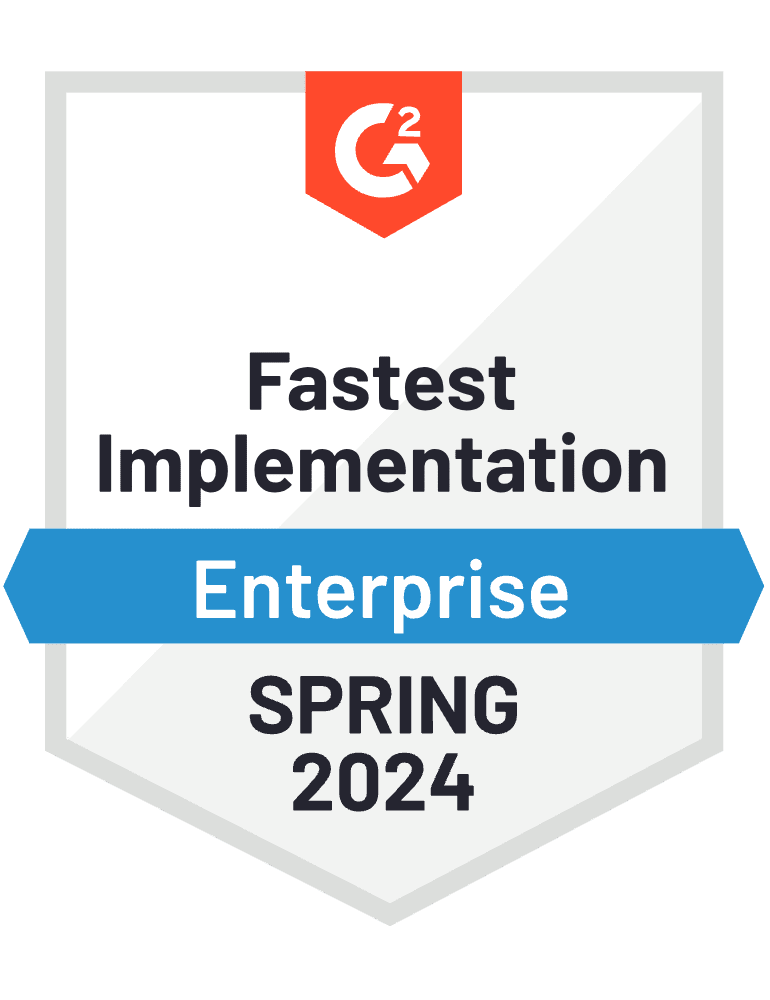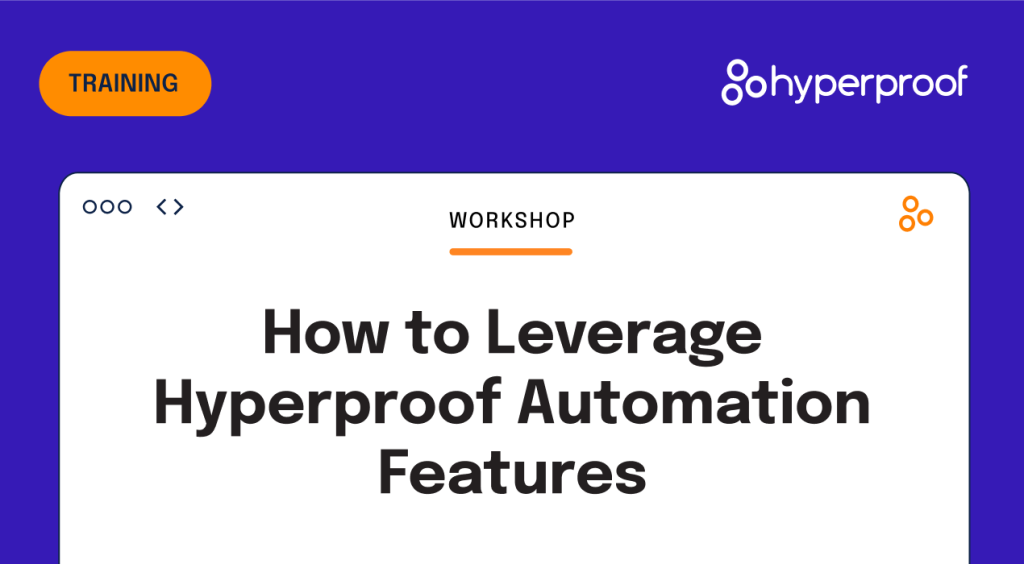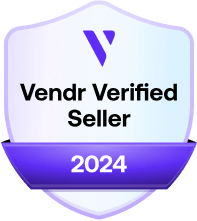GRC Platforms: 5 Features You Need

When it comes to adding a Governance, Risk, and Compliance (GRC) platform to your existing tech stack, there’s a lot of things you should take into consideration. From budget constraints to how a tool integrates with your existing systems, this decision will impact nearly all facets of your security and compliance program. That’s why we’ve identified the top features you need in a GRC platform so you can be confident that you’re making the right choice.
Before you dive into what makes a GRC platform, there are a few things to consider, which we’ve outlined in a previous post that might be helpful to you. If you don’t have time to read the whole thing, here are some high-level questions to ask yourself:
- What problems do you need to solve?
- What do your stakeholders need?
- What resources do you have for implementation?
- What’s your budget?
Making time for discovery within your organization will help smooth out the overall search process so it’s less painful. Once you’ve laid this groundwork, you can focus on the key differentiators for all of the GRC platforms in the compliance landscape today.
Let’s talk about the five most important features your GRC platform should have.
Top 5 most important GRC platform features
1. Workflow automation

One of the best parts of a GRC platform is the automation of your common workflows. From automating evidence collection to real-time reporting on risk and controls, you can do a lot more with the time saved by automations. However, that doesn’t mean you should rely solely on automation.
Putting all of your compliance efforts on autopilot can spell disaster. Managing a GRC platform (and compliance program) should be an active, ongoing process that requires strategic human contribution. After all, that’s what makes GRC what it is: the knowledge and expertise of employees building the overall program. So, automations should fit into your existing workflows and make your life easier, not harder.
But, automation does help prevent manual, human errors. With some GRC platforms, you can automate proof collection by using APIs, which are then set to pull information from your other systems on a schedule you choose. This not only has time savings, but also cost savings — because you can do more with less, faster.With GRC platforms, you can automate many of the tasks that used to take you hours — including automated controls, or continuous controls monitoring (CCM). We define CCM as the application of technology to allow continuous or high-frequency monitoring of controls to validate the effectiveness of controls designed to mitigate a wide range of risks.
With CCM, you no longer need to manually test your controls — they’re continuously monitored for you by the GRC platform. You can instantly receive alerts when risk is detected so you’re not leaving the company vulnerable to threats. Plus, some GRC systems allow you to create tasks within the system when things fail so your team can quickly improve security, all in one place.
“This year, we invested time in setting up our GRC platform in a way that will help us reap the benefits of automation next year and for years to come . . . We plan to further automate our compliance operations with the ultimate goal of automating everything we can automate.”
Mike Caldwell, Senior Program Manager, GRC, Outreach
2. Cutting-edge security combined with ease-of-use

It may seem obvious, but since your GRC platform is where vulnerabilities are stored and cataloged, you need a tool secure enough to keep your data safe, all while enabling you to do your work more efficiently. Finding the GRC platform that puts user experience first and stores data securely may sound like a far-off, distant dream, but it’s not.
Some legacy GRC platforms store your data securely, but their interfaces are clunky and difficult to manage. Others have flashy UI and UX with vulnerable databases that anyone could infiltrate. Luckily, new solutions are surfacing in the market that marry ease-of-use and security so you know your data is protected and your team can easily manage compliance without building Excel formulas or spending hours trying to navigate an unintive platform.Secure access to the right data is important, too. Your GRC platform will contain information about your greatest vulnerabilities, so it’s vital that stakeholders only get access to what they need to do their work. Rich collaboration tools within GRC platforms allow you to control who can access what while still enabling team efforts. Creating tasks, managing teams, and remaining secure should be easy and intuitive within the tool, so you can keep your data safe and organized.
“Because all of our controls and the details about how those controls function are stored in our GRC platform, I can easily retrieve information I need to answer customers’ questions. Our organization is able to be responsive to our customers and demonstrate that we are working towards becoming first-in-class from a security standpoint.”
Mohamed Manga, Engineering Manager – Digital Enablement, Unifonic
3. Ensure your GRC platform can scale

Scaling compliance is a difficult, painful process. Adding additional frameworks, collecting evidence, and maintaining compliance becomes cumbersome and difficult to manage without a GRC platform. You’re probably also stressed about managing it all on your own, on top of all the other legal and security risks (not to mention growing data breaches). That’s why choosing the right GRC platform means choosing one that helps you do your job.
From assigning tasks to stakeholders, understanding your risk posture, and organizing evidence, the right platform is one that simplifies your day and makes compliance easier. Without a unified platform, you may struggle to truly know that your program is successful when managing it from complex spreadsheets. And, the thought of adding more frameworks probably just adds more stress. That’s why a system that can properly scale will help take the pressure off of you as you adhere to more and more compliance frameworks.
High-quality GRC platforms have the ability to scale alongside their customers. As your business grows, the platform does too, making tasks simpler and easier even when your organization becomes larger.
Another perk is having open lines of communication between customers and product teams. When you have good communication, you get a positive feedback loop, meaning customer’s feedback directly impacts the newest features and product roadmap.
Scalability is vital to GRC platforms. As you grow, you don’t want the product to grow stagnant, but rather enable you to remain compliant and secure at any size.
“As our company continued to expand and grow, we needed a GRC platform that was going to grow with us and not feel limited by the functionalities that we had here in place.”
Jessica Parant, Compliance Specialist, Pythian
4. Dashboards and reporting

One of the most important aspects of a GRC platform is reporting and dashboarding. Managing compliance in spreadsheets makes reporting a complex, manual task. The data also doesn’t automatically update, meaning you’re left to hope you have the most up-to-date information when presenting to your executive team. Add in the potential for human error, and are you really confident in that report after all?
With reporting in a GRC platform, you can easily see what controls are important to you, and know which control families are “in the red.” Reports can also allow you to see top risks and any significant changes in them, such as percent increases or decreases. You can also view which controls might be important to cyber insurance policy renewals, and how they’re tracking. Reporting in your GRC platform simplifies the manual tasks you have to perform, all while giving you confidence in your numbers and key risk indicators (KRIs). But then, you can also pull all of these reports into dashboards.
With the right GRC platform, you can quickly create a consistent and shareable dashboard that takes no additional time to build. Not only do your stakeholders have a source of truth they can trust, but you also save hours of time and get out of spreadsheet hell, leaving you able to do more meaningful work. Your data becomes more consistent, updates automatically, and you can trust what you share. Plus, stakeholders can understand your risk posture at a glance, and you won’t spend hours parsing Excel data or scrambling to answer compliance questions.
You’ll also be able to easily present information to the board, from the amount of money spent on risk management to trendline changes in risk over time. Dashboards can also display organizational cybersecurity maturity and the top risks your CISO may need to make decisions on.
It’s all of the information you want, when you need it — in a single easy-to-build format. A GRC platform helps you know where your organization stands at a glance.
“With our GRC platform, we can immediately understand our compliance posture because it provides a single source of truth on controls that is more reliable than Google sheets.”
Mike Caldwell, Senior Program Manager, GRC, Outreach
5. The right integrations

If your GRC platform can’t talk to the existing tools in your tech stack, you should expect to perform a lot of manual work bouncing between systems. From pulling reports and data to manually uploading them to the platform, your day just got more complicated, not simpler.
A platform with the right integrations – like Jira, AWS, Okta, Cloudflare, and more – will make your life easier. You’ll be able to access all of your compliance data, evidence, and controls all in one place, which will bring you peace-of-mind and a lot more time back to focus on more important tasks.
Powerful integrations lay the groundwork for a successful GRC platform, as they allow you to connect everything so your team can collaborate in one system. Plus, without integrations, many automations are proven useless. Who would want to use a GRC platform that doesn’t have the right integrations? You’d just be asking for even more manual work, which brings us to the next point.
“When I stepped into my current role, we had separate compliance and risk management programs. All efforts were siloed. I wanted to fully integrate the two siloed programs into a single unified risk and compliance program.”
Richard Guerrero, Director of Risk and Compliance, Clarifire
Find what matters to your organization
Choosing the right GRC platform is hard, but knowing what’s most important for you and your organization is key to choosing the right one. Ultimately, what matters most is that you find a platform with all the features listed above that will enable your team to maintain compliance without the headache of manual processes or inflexible legacy solutions.
Quick tip: Hyperproof is a platform that provides all the integrations, features, and automations that you need to make your GRC program run smoothly. Plus, it’s easy to use and can scale with you as your business grows. Not to mention it will get you out of spreadsheets and into a GRC platform that understands the way you work.
If you’re ready to learn more about Hyperproof, check out our case studies or request a demo and meet with one of our compliance operations specialists.
See Hyperproof in Action
Related Resources
Ready to see
Hyperproof in action?












